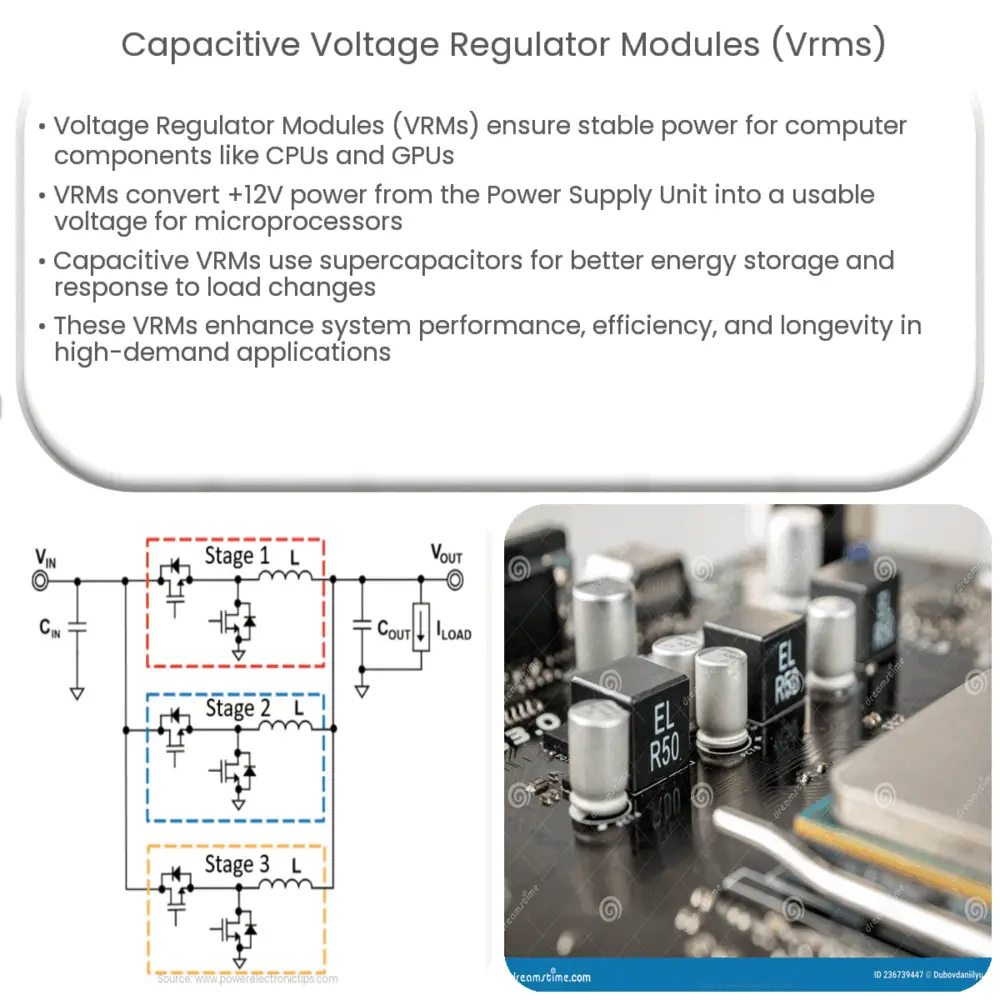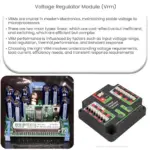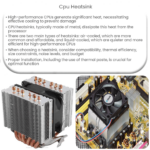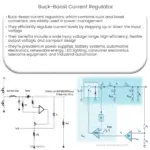Explore the advanced world of capacitive Voltage Regulator Modules (VRMs). Understand their working, benefits, uses, and future prospects.

Introduction to Capacitive Voltage Regulator Modules (VRMs)
A Voltage Regulator Module (VRM), sometimes referred to as a Voltage Regulation Module, is a buck converter that provides a microprocessor with its required supply voltage. VRMs have the critical role of ensuring stable power delivery for computer components, mainly for the CPU and GPU, which often demand high power during operation. This stability is fundamental for these components’ longevity and efficient performance. Capacitive Voltage Regulator Modules offer a unique, more efficient way of managing voltage regulation, thereby enhancing the overall performance of these components.
Working of a Voltage Regulator Module
In essence, a VRM is responsible for converting the +12V power from the Power Supply Unit (PSU) into a much lower voltage that a CPU or GPU can handle, typically in the 1.0V to 1.5V range. The conversion is essential because the microprocessor uses a low-voltage, high-current power supply, which differs significantly from the power supply’s typical output. The VRM accomplishes this through a two-stage process: buck conversion and voltage regulation.
- Buck Conversion: In this phase, the VRM takes the input voltage from the PSU and reduces it to a lower voltage. This process involves switching the input power on and off rapidly—a method known as Pulse Width Modulation (PWM). The average output voltage can be adjusted by modifying the on-off duty cycle.
- Voltage Regulation: After buck conversion, the voltage needs to be stabilized. This is where capacitors come into play. Capacitors are used to smooth out the voltage and reduce voltage spikes, making the power delivery stable and efficient. The addition of inductors helps further by minimizing abrupt current changes.
Introduction to Capacitive VRMs
The primary distinction of Capacitive VRMs comes from the utilization of supercapacitors or ultracapacitors instead of traditional electrolytic capacitors. This shift provides notable benefits. Supercapacitors have a higher energy storage capacity and can tolerate more charge and discharge cycles than their conventional counterparts.
As a result, capacitive VRMs can respond to sudden changes in load demand more effectively. This ability to react quickly and maintain stability under high demand situations leads to enhanced overall performance, especially for high-performance CPUs and GPUs that require stable power supplies for optimal operation.
Key Benefits of Capacitive VRMs
There are several reasons why Capacitive VRMs provide significant advantages over conventional VRMs:
- Greater Efficiency: Supercapacitors’ high energy storage capacity and rapid charging and discharging capabilities contribute to more efficient voltage regulation. This efficiency translates into improved component performance and can reduce energy costs.
- Longevity: Supercapacitors have a longer lifespan compared to traditional electrolytic capacitors. They can withstand a large number of charge and discharge cycles without significant degradation, enhancing the VRM’s lifespan and reliability.
- Enhanced Performance: The ability to respond swiftly to changes in load demand contributes to superior performance, particularly in high-performance systems such as gaming computers or servers, where consistent and reliable power delivery is critical.
Use Cases for Capacitive VRMs
Due to their exceptional performance and efficiency, Capacitive VRMs are increasingly being used in various high-demand applications. These include gaming PCs, servers, and high-performance workstations that require stable and efficient power supplies. Capacitive VRMs can also be beneficial in applications involving complex simulations, 3D rendering, and heavy multi-tasking, where the systems’ components are pushed to their limits.
Future Prospects
As technology progresses and the demand for power increases, the need for efficient power regulation systems will continue to rise. Supercapacitors are continuously evolving, with advances in materials science leading to improved storage capacities and discharge rates. As such, the use of capacitive VRMs is expected to expand further in the coming years.
Conclusion
In conclusion, capacitive Voltage Regulator Modules represent a significant advancement in voltage regulation technology. By leveraging the superior performance characteristics of supercapacitors, these VRMs offer enhanced efficiency, longevity, and response times, contributing to improved system performance. As the need for high-performing, reliable power regulation continues to grow in our increasingly digital world, capacitive VRMs are likely to become an essential feature in high-performance computing systems, ensuring efficient and stable power delivery for optimal operation.




